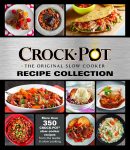
Crockpot Recipe Collection: More Than Review crockpot recipes Buying Guide – Oemiu
Crockpot Recipe Collection: More Than a Review, a Buying Guide
The slow cooker, affectionately known as the Crockpot, has cemented its place as a kitchen essential for busy individuals and families alike. More than just a cooking appliance, it’s a time-saving device, a culinary workhorse, and a purveyor of comfort food. But navigating the world of slow cookers can be overwhelming. With so many models, features, and – of course – recipes available, it’s difficult to know where to start. This guide delves into the heart of slow cooking, exploring the nuances of selecting the right Crockpot, mastering essential techniques, and building a collection of foolproof recipes. We’ll move beyond simple product reviews, offering a comprehensive exploration of the slow cooker universe, empowering you to create delicious and satisfying meals with minimal effort. Whether you’re a seasoned slow cooker enthusiast or a complete novice, this guide provides the knowledge and inspiration you need to unlock the full potential of your Crockpot.
Choosing the Right Crockpot: A Buyer’s Guide
Selecting the right Crockpot is crucial for ensuring consistently delicious results and a seamless cooking experience. The sheer variety of models available can be daunting, but by considering your specific needs and cooking style, you can narrow down your options and choose a slow cooker that perfectly complements your lifestyle. The first consideration is size. Crockpots are typically measured in quarts, ranging from small 1.5-quart models suitable for dips and side dishes to large 8-quart models ideal for feeding a crowd or batch cooking. A 4- to 6-quart Crockpot is generally a good starting point for most families, offering enough capacity for everyday meals and occasional gatherings. Think about how many people you regularly cook for and the types of dishes you plan to prepare. Are you primarily cooking for yourself, or do you have a large family to feed? Do you frequently host dinner parties or potlucks?
Beyond size, consider the features that are most important to you. Many modern Crockpots offer a range of programmable settings, allowing you to precisely control the cooking time and temperature. A digital timer is a valuable addition, enabling you to set the slow cooker to automatically switch to a “warm” setting once the cooking cycle is complete, preventing overcooking and ensuring your meal stays at the perfect serving temperature. Some models also feature built-in temperature probes, which allow you to monitor the internal temperature of your food, ensuring that meats are cooked to a safe and delicious doneness. The material of the cooking pot is another important factor to consider. Most Crockpots feature either stoneware or metal inserts. Stoneware inserts are known for their even heat distribution and are typically dishwasher-safe, making cleanup a breeze. Metal inserts, on the other hand, are lighter and more durable, and they can often be used on the stovetop for searing meats before slow cooking, adding depth of flavor to your dishes. Think about your preferred cooking style and the types of recipes you plan to prepare when choosing between stoneware and metal inserts.
Finally, consider the overall design and aesthetics of the Crockpot. While functionality is paramount, you’ll also want a slow cooker that complements your kitchen décor. Crockpots are available in a wide range of colors and styles, from classic stainless steel to vibrant, modern designs. Consider the footprint of the Crockpot and whether it will fit comfortably on your countertop or in your pantry. Also, pay attention to the lid. A tight-fitting lid is essential for maintaining consistent temperature and preventing moisture loss during cooking. Some Crockpots feature locking lids, which are particularly useful for transporting food to potlucks or gatherings. Carefully evaluate these factors to find the perfect Crockpot to suit your needs and preferences. Perhaps you need something to make your famous slow cooker pot roast recipes? A little research can make the buying process a lot easier.
| Feature | Benefit | Considerations |
|---|---|---|
| Size (Quarts) | Determines the capacity for servings. | Household size, frequency of gatherings. |
| Programmable Settings | Precise control over cooking time and temperature. | Desired level of control, cooking expertise. |
| Digital Timer | Automatic switch to “warm” setting. | Busy schedules, preventing overcooking. |
| Temperature Probe | Monitors internal food temperature. | Cooking meats, ensuring safe doneness. |
| Insert Material (Stoneware/Metal) | Impacts heat distribution and durability. | Preferred cooking style, ease of cleaning. |
| Design and Aesthetics | Complements kitchen décor. | Personal preferences, counter space. |
Mastering Slow Cooking Techniques
While the Crockpot is undeniably convenient, mastering a few key techniques can elevate your slow cooking game from basic to brilliant. Slow cooking is not simply about tossing ingredients into a pot and letting them simmer for hours. Understanding the nuances of the process, from browning meats to layering flavors, can make a significant difference in the final outcome. One of the most important techniques is browning meats before adding them to the Crockpot. Searing the exterior of meats creates a rich, flavorful crust that adds depth and complexity to the dish. This step also helps to render excess fat, preventing the finished dish from being greasy. While some Crockpots feature stovetop-safe inserts that allow you to sear directly in the pot, you can also use a separate skillet for this step. Simply heat a tablespoon or two of oil in a skillet over medium-high heat and brown the meat on all sides before transferring it to the slow cooker.
Another crucial technique is layering flavors. Slow cooking allows flavors to meld and deepen over time, so it’s important to build a solid foundation of aromatic ingredients. Start with a base of onions, garlic, and other vegetables, such as celery or carrots. These ingredients will release their flavors as they cook, creating a rich and savory sauce. Add herbs and spices to further enhance the flavor profile. Dried herbs are generally preferred over fresh herbs in slow cooking, as they tend to hold their flavor better over extended cooking times. Consider using bay leaves, thyme, oregano, or rosemary to add depth and complexity to your dishes. Don’t be afraid to experiment with different spice combinations to create your own signature flavors. Liquid is another essential component of slow cooking. It’s important to add enough liquid to prevent the food from drying out, but not so much that the finished dish is watery. The amount of liquid you need will depend on the specific recipe and the ingredients you’re using. As a general rule, aim to cover the ingredients about halfway with liquid. You can use broth, stock, wine, or even water as your liquid base. Keep in mind that the liquid will not reduce significantly during slow cooking, so avoid adding too much at the beginning.
Finally, understanding cooking times and temperatures is crucial for achieving optimal results. Most Crockpots have two or three settings: low, high, and warm. The low setting is ideal for long, slow cooking, typically ranging from 6 to 8 hours. The high setting is faster, usually taking 3 to 4 hours. The warm setting is designed to keep food at a safe serving temperature after it’s cooked. Keep in mind that cooking times can vary depending on the specific recipe, the amount of food you’re cooking, and the model of your Crockpot. It’s always a good idea to check the food periodically to ensure it’s cooking properly. And remember those delicious slow cooker chicken recipes that everyone loves? Well, these are greatly affected by following these methods! By mastering these essential slow cooking techniques, you can consistently create flavorful and satisfying meals with ease.
Building Your Crockpot Recipe Collection
A well-curated collection of Crockpot recipes is the key to unlocking the full potential of your slow cooker. While countless recipes are available online and in cookbooks, it’s important to choose recipes that suit your taste, dietary needs, and lifestyle. Start by identifying your favorite types of cuisines and dishes. Are you a fan of hearty stews and chilis? Do you prefer Asian-inspired flavors? Or are you looking for healthy and nutritious recipes? Once you have a general idea of your preferences, you can begin to explore different recipes and find those that appeal to you.
One of the best ways to build your Crockpot recipe collection is to start with classic recipes. These recipes are tried and true, and they provide a solid foundation for experimenting and creating your own variations. Some classic Crockpot recipes include pot roast, chili, pulled pork, and chicken noodle soup. These recipes are typically easy to make and require minimal ingredients, making them perfect for busy weeknights. Once you’ve mastered the basics, you can begin to explore more adventurous recipes. Consider trying recipes from different cuisines, such as Indian curries, Mexican enchiladas, or Moroccan tagines. These recipes often involve more complex flavors and techniques, but the results are well worth the effort.
Don’t be afraid to experiment with your own recipes. One of the great things about slow cooking is that it’s very forgiving. You can easily adapt recipes to suit your taste preferences or use up leftover ingredients. Try adding different herbs, spices, or vegetables to your favorite recipes. You can also experiment with different cooking times and temperatures to achieve the desired results. Keep track of your experiments in a recipe journal or online document. This will help you remember what worked well and what didn’t, allowing you to refine your recipes over time. And if you’re looking for something a little different, try finding some delicious slow cooker dessert recipes. They will not disappoint! Furthermore, consider the nutritional value of the recipes you choose. Look for recipes that are high in protein, fiber, and vitamins and minerals. Avoid recipes that are high in saturated fat, sodium, and sugar. You can also modify existing recipes to make them healthier by reducing the amount of fat or sugar, adding more vegetables, or substituting leaner cuts of meat. With a little creativity and effort, you can build a Crockpot recipe collection that is both delicious and nutritious.
Beyond the Basics: Expanding Your Crockpot Horizons
Once you’ve mastered the fundamentals of slow cooking, it’s time to explore the more advanced techniques and applications that can elevate your Crockpot cuisine to new heights. The Crockpot is far more versatile than most people realize, capable of producing everything from gourmet meals to delectable desserts. One area to explore is the use of different cuts of meat. While pot roast is a classic Crockpot dish, don’t limit yourself to chuck roast. Try experimenting with other cuts of beef, such as brisket, short ribs, or even a whole beef tenderloin. These cuts can be incredibly tender and flavorful when slow-cooked to perfection. Similarly, explore different cuts of pork, such as pork shoulder, pork loin, or even pork belly. Each cut will impart a unique flavor and texture to your dishes.
Another way to expand your Crockpot horizons is to experiment with different types of cuisines. The Crockpot is well-suited for preparing dishes from around the world, from Indian curries to Moroccan tagines to Korean stews. These cuisines often involve complex flavors and spices, which are perfectly suited for slow cooking. The long cooking times allow the flavors to meld and deepen, creating a truly authentic and delicious result. To find inspiration, explore cookbooks and online resources dedicated to international cuisine. Look for recipes that are specifically designed for slow cooking, or adapt existing recipes to the Crockpot. Be sure to adjust the cooking times and temperatures as needed to ensure that the food is cooked properly.
The Crockpot can also be used to prepare a wide variety of desserts. From cobblers and crumbles to cakes and puddings, the slow cooker can create surprisingly delicious and comforting desserts. The key to successful slow cooker desserts is to use the right ingredients and techniques. Avoid using too much liquid, as this can result in a soggy dessert. Instead, focus on using ingredients that will release their own moisture as they cook, such as fruit or yogurt. Also, be sure to use a low cooking temperature to prevent the dessert from burning. Check the dessert periodically to ensure that it’s cooking properly. To create a truly impressive slow cooker dessert, consider adding a topping or glaze. A simple crumble topping made from flour, butter, and sugar can add a delightful crunch to a fruit cobbler. Or a creamy glaze made from powdered sugar and milk can add a touch of sweetness to a cake or pudding. Furthermore, if you are looking for something very easy, consider making some slow cooker vegetarian recipes. With a little experimentation, you can create a wide variety of delicious and impressive dishes using your Crockpot.
Frequently Asked Questions (FAQ)
Can I put frozen meat in the Crockpot?
Is it safe to cook frozen meat in a slow cooker?
While it’s technically possible to cook frozen meat in a Crockpot, it’s generally not recommended due to safety concerns. The primary issue is that frozen meat takes a significantly longer time to reach a safe internal temperature when cooked in a slow cooker. During this extended period, the meat can linger in the “danger zone” (between 40°F and 140°F), where bacteria can multiply rapidly, increasing the risk of foodborne illness. If you must cook frozen meat in a slow cooker, it’s crucial to ensure that it reaches a safe internal temperature as quickly as possible. This can be achieved by using a smaller piece of meat, cutting the meat into smaller pieces, or adding hot liquids to the Crockpot to speed up the thawing process. However, even with these precautions, it’s still safer to thaw meat completely before cooking it in a slow cooker. Always use a food thermometer to verify that the meat has reached a safe internal temperature before serving.
How much liquid should I add to my Crockpot?
The amount of liquid you should add to your Crockpot depends on the specific recipe and the ingredients you’re using. As a general rule, aim to cover the ingredients about halfway with liquid. The purpose of the liquid is to create steam and prevent the food from drying out, but you don’t want to add so much liquid that the finished dish is watery. Some ingredients, such as vegetables and fruits, will release their own moisture as they cook, so you may need to add less liquid than you think. Conversely, if you’re cooking a dish with a lot of dry ingredients, such as beans or grains, you’ll need to add more liquid to ensure that they cook properly. Always refer to the specific recipe for guidance on the amount of liquid to add. If the recipe doesn’t provide specific instructions, start with a small amount of liquid and add more as needed during the cooking process. Remember that the liquid will not reduce significantly during slow cooking, so avoid adding too much at the beginning.
What temperature setting should I use on my Crockpot?
Most Crockpots have two or three settings: low, high, and warm. The low setting is ideal for long, slow cooking, typically ranging from 6 to 8 hours. This setting allows the flavors to meld and deepen over time, resulting in a more flavorful and tender dish. The high setting is faster, usually taking 3 to 4 hours. This setting is useful when you’re short on time or when you’re cooking delicate ingredients that could overcook on the low setting. The warm setting is designed to keep food at a safe serving temperature after it’s cooked. This setting is not intended for cooking food, but rather for maintaining the temperature of already-cooked food. The specific temperature of each setting can vary depending on the model of your Crockpot. Consult your Crockpot’s instruction manual for specific temperature information. When choosing a temperature setting, consider the type of dish you’re cooking, the amount of time you have, and the desired level of tenderness. Always check the food periodically to ensure that it’s cooking properly.
Can I leave my Crockpot on overnight?
Leaving your Crockpot on overnight is generally safe, as long as you follow a few precautions. First, make sure that your Crockpot is in good working condition and that the cord is not frayed or damaged. Second, place the Crockpot on a stable surface away from flammable materials. Third, ensure that the Crockpot is properly ventilated. Do not place it in a confined space, such as a cabinet or closet. Fourth, use a temperature probe to monitor the internal temperature of the food. This will help you ensure that the food reaches a safe internal temperature and that it doesn’t overcook. Fifth, if you’re using a programmable Crockpot, set the timer to automatically switch to the “warm” setting after the cooking cycle is complete. This will prevent the food from overcooking and keep it at a safe serving temperature. While leaving your Crockpot on overnight is generally safe, it’s always a good idea to check the food periodically to ensure that it’s cooking properly.
How do I prevent my Crockpot food from drying out?
Preventing your Crockpot food from drying out involves a few key strategies. First, ensure that you’re adding enough liquid to the Crockpot. As a general rule, aim to cover the ingredients about halfway with liquid. The liquid will create steam and prevent the food from drying out. Second, use a tight-fitting lid. A tight-fitting lid will help to trap moisture inside the Crockpot. Third, avoid lifting the lid unnecessarily during cooking. Each time you lift the lid, you release heat and moisture, which can cause the food to dry out. Fourth, if you’re cooking a dish that tends to dry out, such as chicken breast, consider adding a layer of vegetables or fruit to the bottom of the Crockpot. The vegetables or fruit will release their own moisture as they cook, helping to keep the chicken moist. Fifth, if you’re cooking a dish for an extended period of time, consider using a lower temperature setting. The low setting will cook the food more slowly, which can help to prevent it from drying out. By following these tips, you can prevent your Crockpot food from drying out and ensure that it stays moist and flavorful.
Can I convert oven recipes to Crockpot recipes?
Converting oven recipes to Crockpot recipes is possible, but it requires some adjustments to ensure that the food cooks properly and doesn’t dry out. The key difference between oven cooking and slow cooking is the temperature. Ovens typically cook at higher temperatures than Crockpots, so you’ll need to adjust the cooking time and temperature accordingly. As a general rule, reduce the oven temperature by about 75-100 degrees Fahrenheit when converting to a Crockpot. For example, if the oven recipe calls for baking at 350°F, set the Crockpot to low. Adjust the cooking time based on the original oven time. A recipe that takes 1 hour in the oven might take 4-6 hours on low in the Crockpot. Also, remember that Crockpots retain moisture better than ovens, so you may need to reduce the amount of liquid in the recipe. Conversely, if the oven recipe is dry, you may need to add a small amount of liquid to the Crockpot to prevent the food from drying out. Consider browning meats before putting them in the slow cooker to add flavor and texture. Always check the food periodically to ensure that it’s cooking properly. Use a food thermometer to verify that the meat has reached a safe internal temperature before serving.
How do I clean my Crockpot?
Cleaning your Crockpot is generally easy, but it’s important to follow a few simple steps to ensure that it’s properly cleaned and sanitized. First, unplug the Crockpot and allow it to cool completely before cleaning. Second, remove the stoneware or metal insert and wash it in warm, soapy water. Use a non-abrasive sponge or cloth to avoid scratching the surface. If food is stuck to the insert, soak it in warm, soapy water for a few minutes before scrubbing. Third, rinse the insert thoroughly with clean water and dry it with a soft cloth. Fourth, wipe the exterior of the Crockpot with a damp cloth. Avoid immersing the Crockpot in water, as this can damage the electrical components. Fifth, if the exterior of the Crockpot is stained or dirty, use a mild cleaning solution to wipe it down. Sixth, allow all parts of the Crockpot to dry completely before reassembling it. For stubborn stains or odors, try filling the insert with water and adding a cup of white vinegar. Bring the mixture to a simmer on the stovetop (if the insert is stovetop-safe) or heat it in the Crockpot on low for an hour. Then, allow the mixture to cool and wash the insert as usual. By following these steps, you can keep your Crockpot clean and in good working condition for years to come.
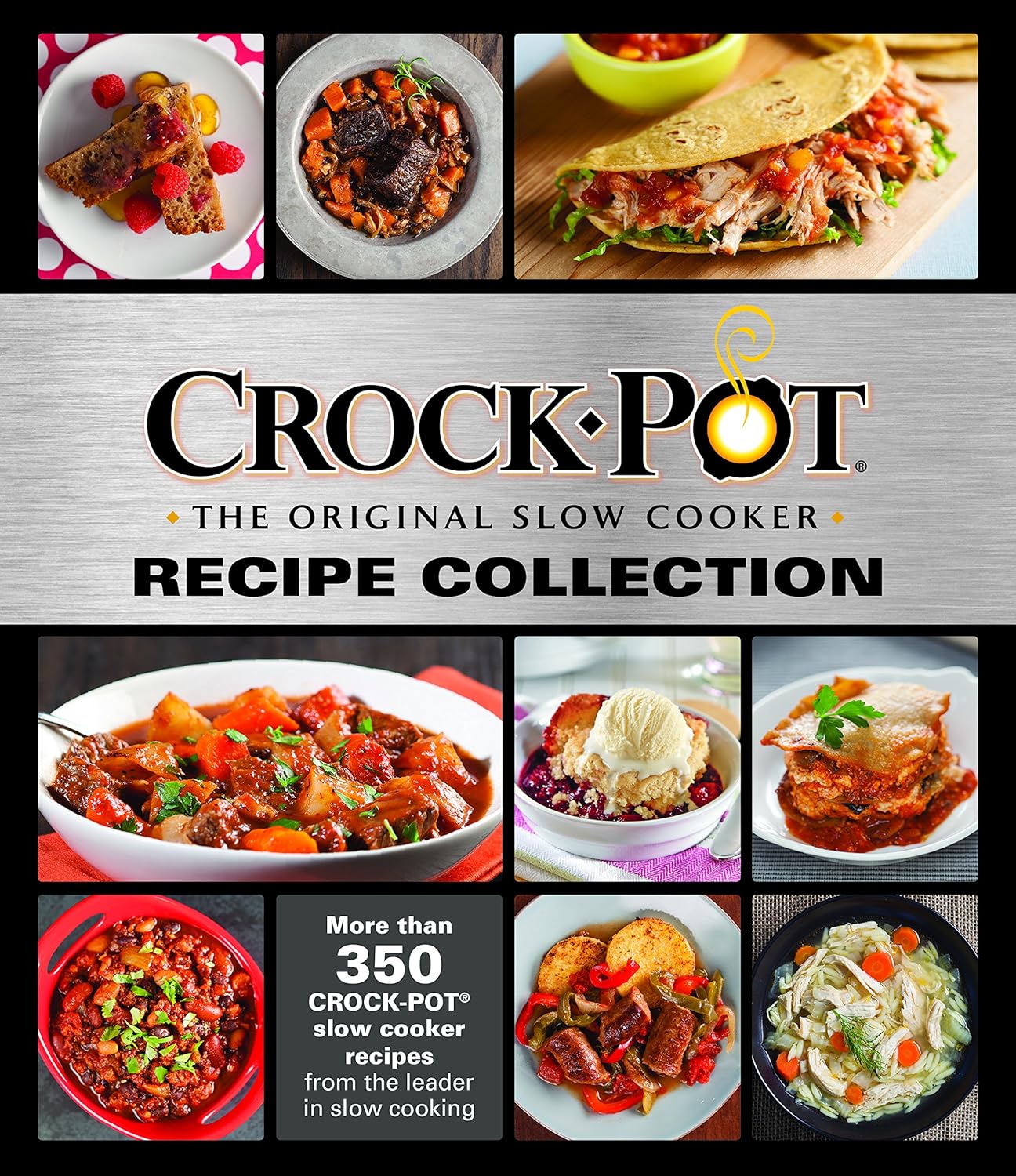
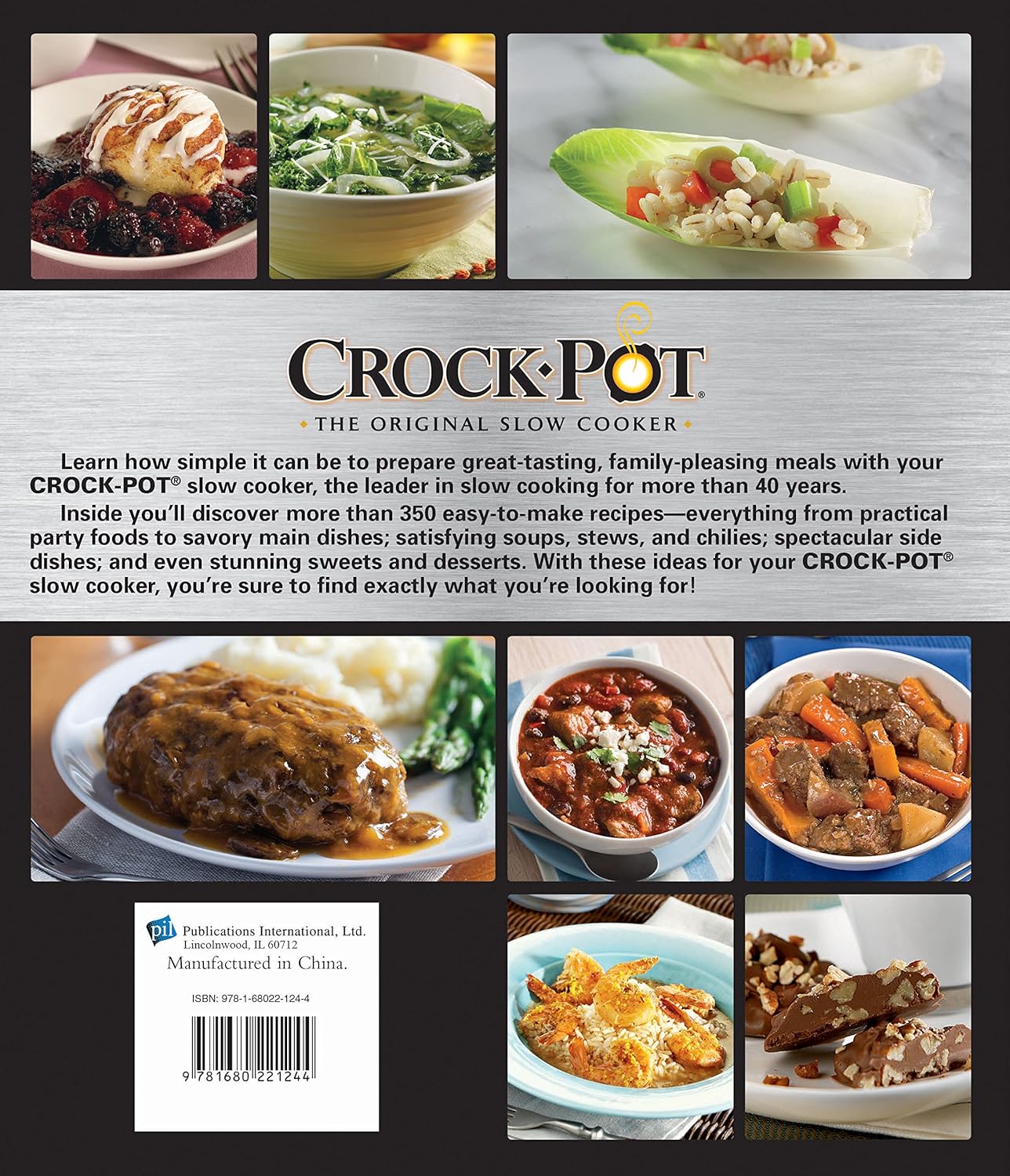
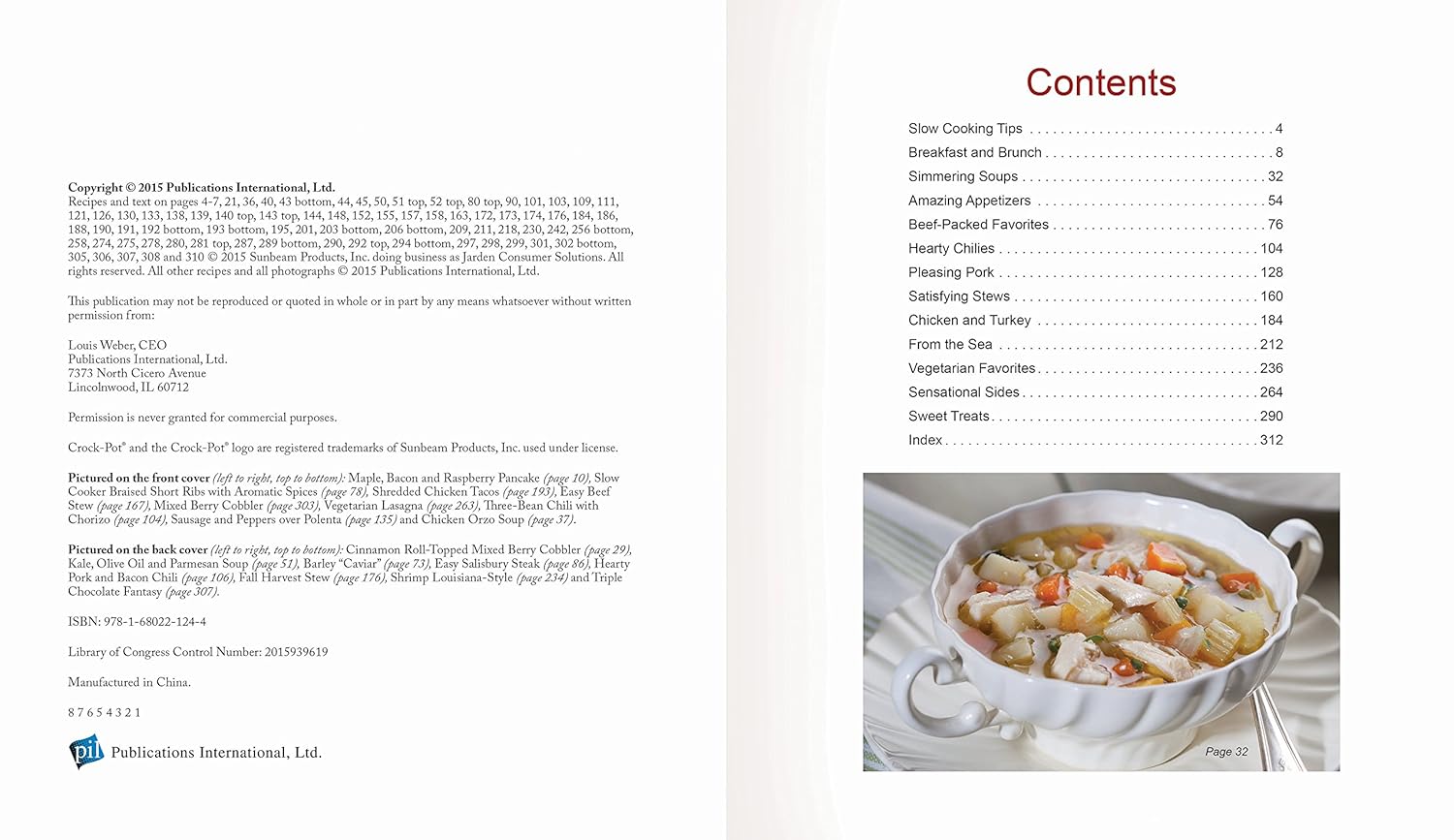
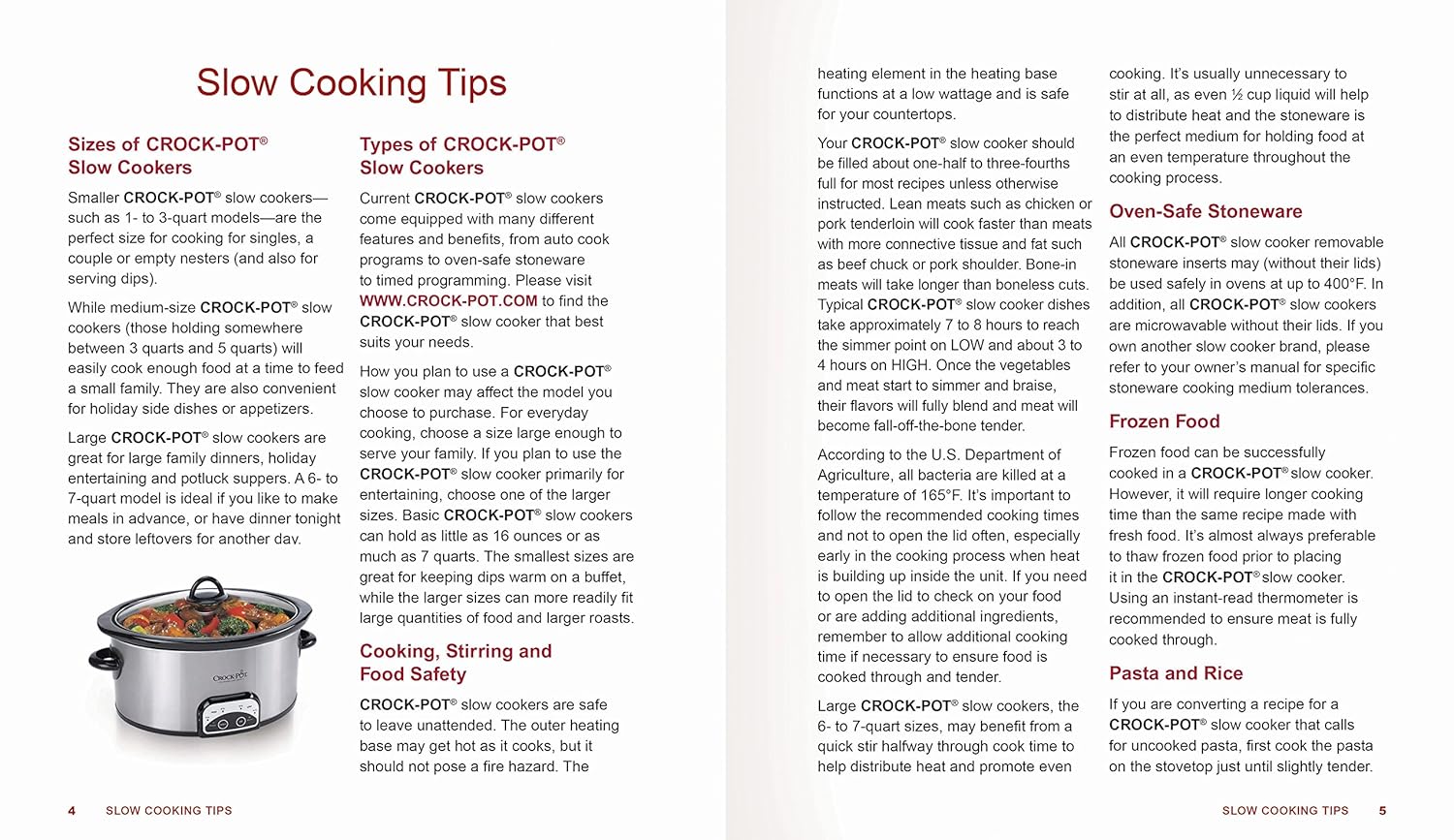
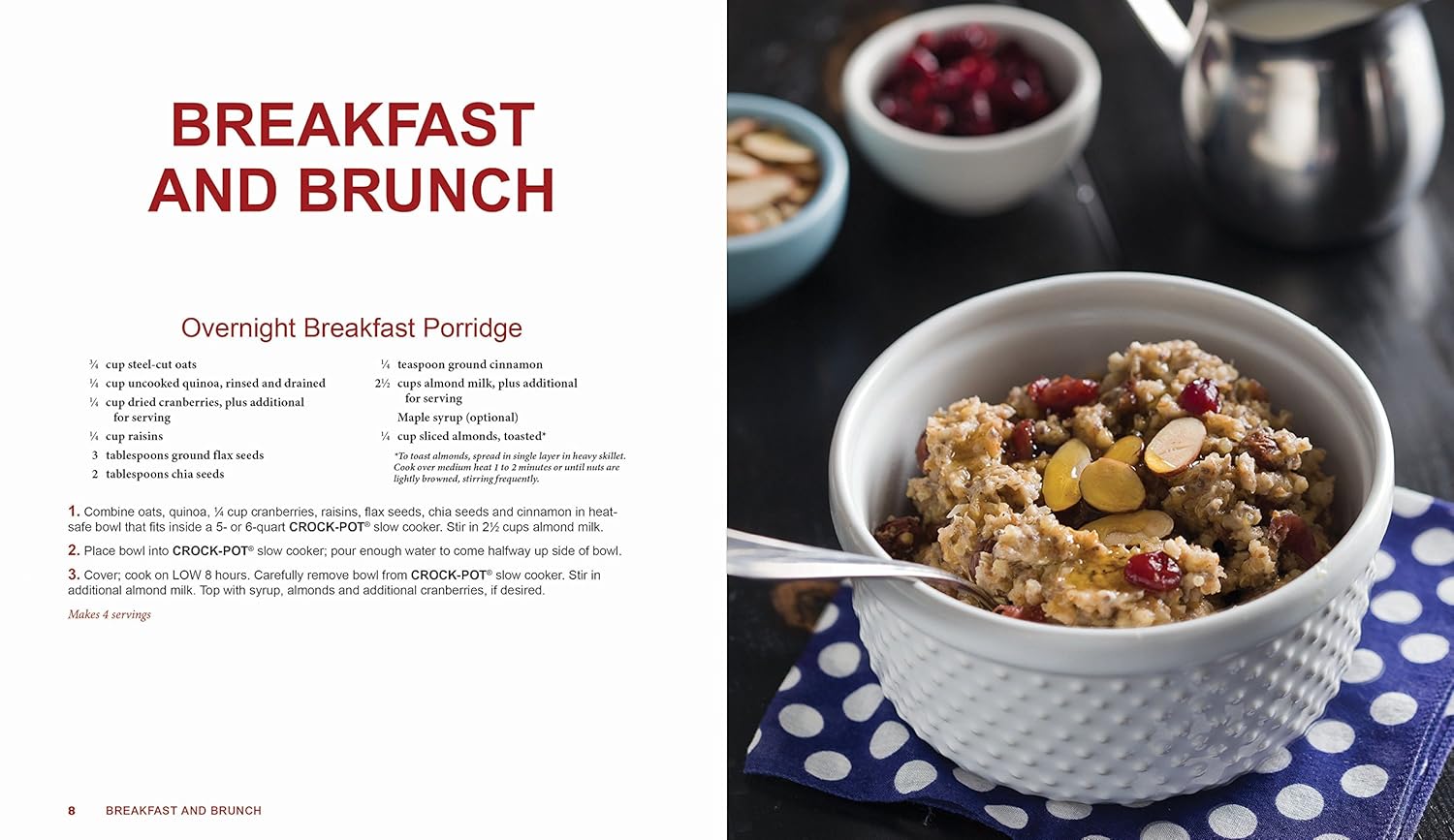
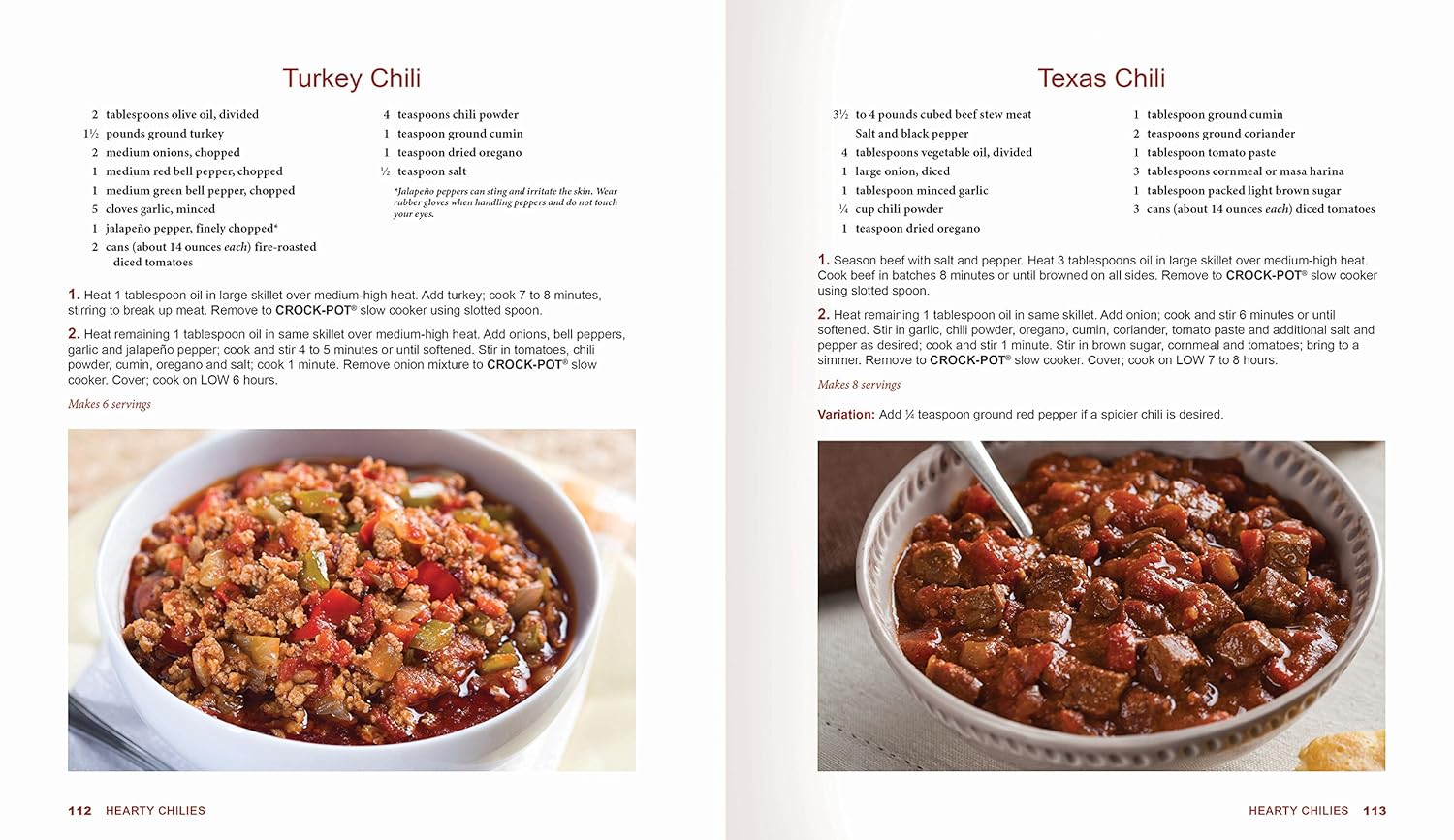
Price: $19.98 - $10.00
(as of Sep 07, 2025 07:39:56 UTC – Details)




